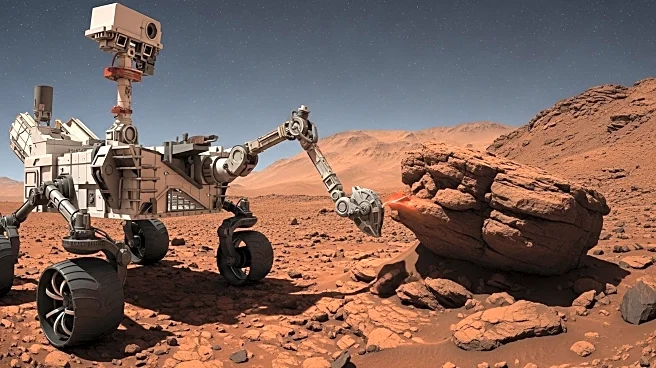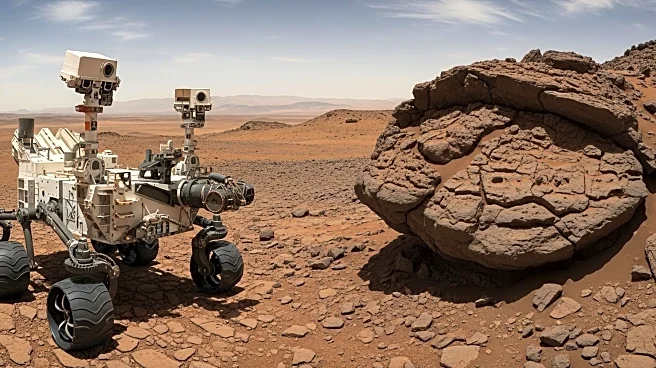What is the story about?
What's Happening?
NASA's Perseverance rover has been exploring Jezero Crater on Mars since 2021, and recent studies have identified 24 minerals that suggest the crater experienced multiple episodes of water activity. These findings indicate that Jezero Crater may have hosted environments suitable for life at various points in Mars' history. The study, led by Eleanor Moreland of Rice University, utilized data collected by Perseverance's X-ray instrument and a new algorithm called MIST to create a mineralogical archive of the crater. The minerals reveal three stages of water-rock interaction, with varying implications for habitability. The oldest rocks show signs of hot, acidic fluids, while later episodes left behind minerals formed in cooler, more neutral waters, which are more conducive to microbial life.
Why It's Important?
The discovery of minerals indicating potential life-supporting conditions in Jezero Crater is significant for the ongoing search for ancient life on Mars. These findings provide a broader context for previous discoveries, such as the potential biosignature detected in a Martian rock named Sapphire Canyon. The study's results enhance our understanding of Mars' geological history and its capacity to support life. This research could influence future Mars exploration missions and the prioritization of samples for return to Earth. The potential for discovering evidence of life beyond Earth has profound implications for planetary science and our understanding of life's existence in the universe.
What's Next?
NASA's Mars Sample Return (MSR) program aims to bring samples from Mars to Earth for further analysis, but the program faces uncertainties due to cost overruns and budget proposals suggesting its cancellation. NASA is exploring cheaper alternatives to achieve this goal. Meanwhile, China is advancing its own Mars sample-return mission, Tianwen-3, which aims to collect and return Martian samples by 2031. The development of the MIST algorithm could play a crucial role in selecting the most valuable samples for return, potentially influencing the success of future missions.
Beyond the Headlines
The study's findings highlight the importance of mineral analysis in understanding Mars' habitability. The presence of minerals formed in varying water conditions suggests a dynamic environmental history that could have supported life. The research underscores the need for continued exploration and sample analysis to resolve the biological-versus-nonbiological debate regarding potential biosignatures. The international race to return Mars samples could shift planetary science leadership and accelerate discoveries about Mars' past.
AI Generated Content
Do you find this article useful?













